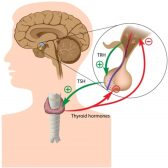Definition
noun, plural: bronchopulmonary lymph nodes
Any of the many lymph nodes located in the hilum of each lung, and associated with the receiving of lymph fluid from the lungs, and draining the fluid to the tracheobronchial nodes
Supplement
Bronchopulmonary lymph nodes are lymph nodes in the hilum of the lung. Lymph nodes are oval-shaped organs found in different parts of the body. They are part of the lymphatic system. Inside the lymph nodes are different immune cells, such as B and T cells. Lymph nodes are sites of the body that act as filters, i.e. draining the lymph fluid of foreign bodies and cancerous cells. Bronchopulmonary lymph nodes receive the lymph fluid from the lungs.
Bronchopulmonary lymph nodes are one of the four main groups of tracheobronchial lymph nodes. The other groups are the tracheal (lymph nodes on the sides of the trachea), the bronchial (for example, the lymph nodes in the angle between the bronchi), and the pulmonary (lymph nodes of the lung).
Bronchopulmonary lymph nodes may specifically be seen between the upper and middle lobe bronchi, below the middle lobe bronchus, and medial to upper lobe bronchus of the right lung. In the left lung, they are predominant at the angle between the left upper and lower lobe of the bronchi, above the upper lobe bronchus, and at the medial to left main bronchus.1
Synonym(s):
- glandulae bronchiale
- bronchial gland
- hilar lymph node
- nodi lymphatici bronchopulmonale
See also:
Reference(s):
1 Shields, T., LoCicero , J., Reed, C.E., Feins, R.H. (2005). General thoracic surgery (6th ed.). Philadelphia: Lippincott Williams & Wilkins.







